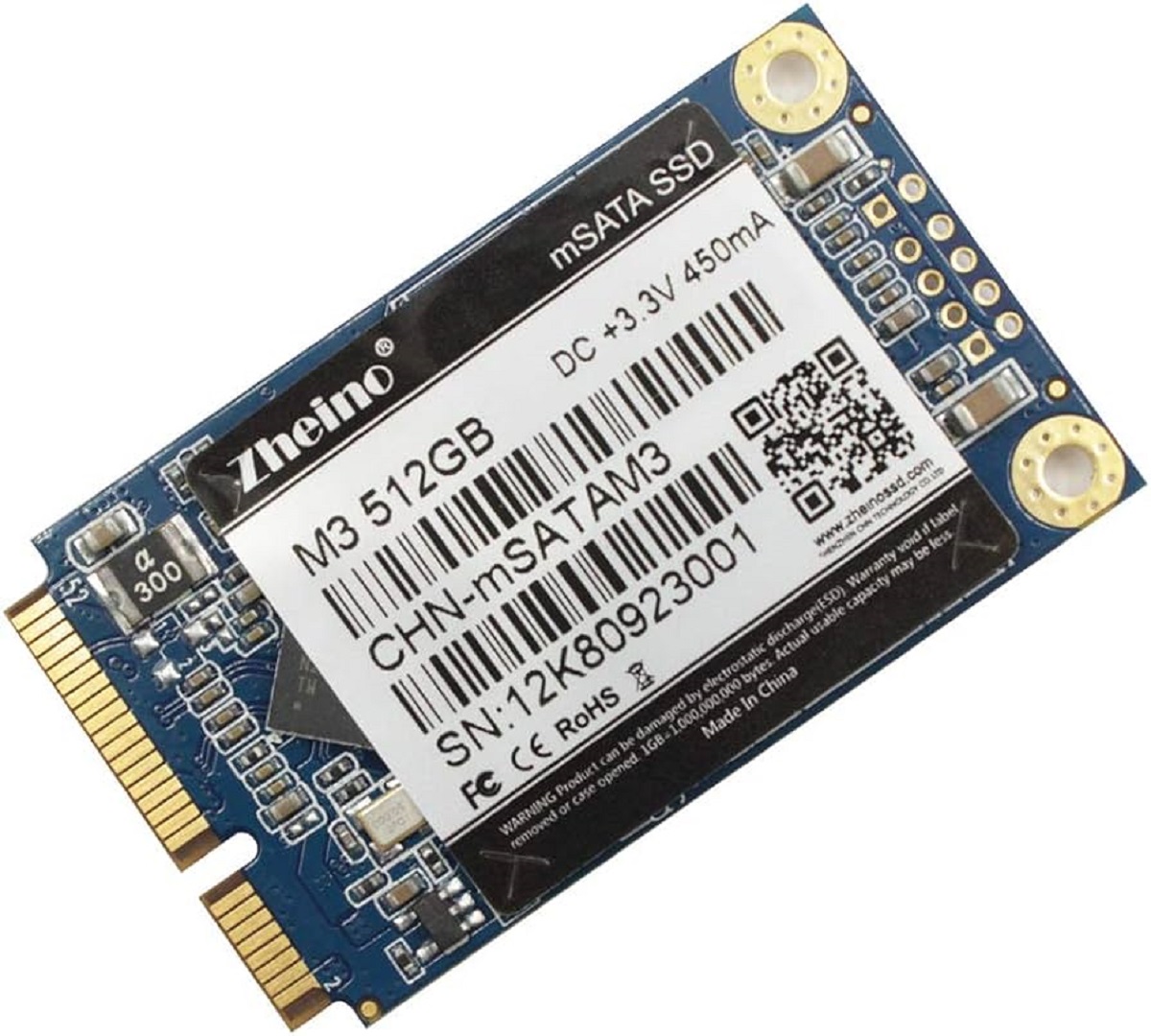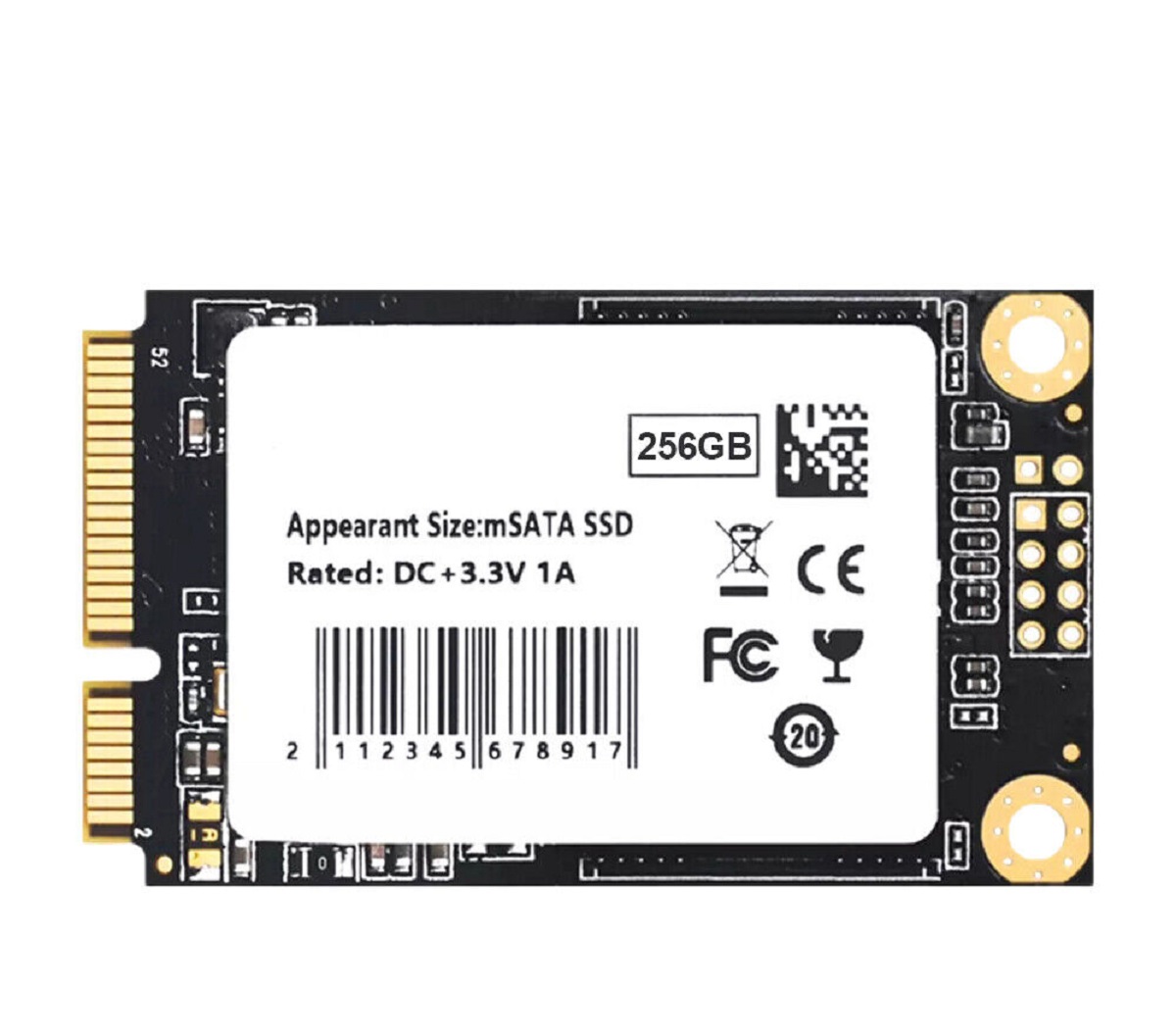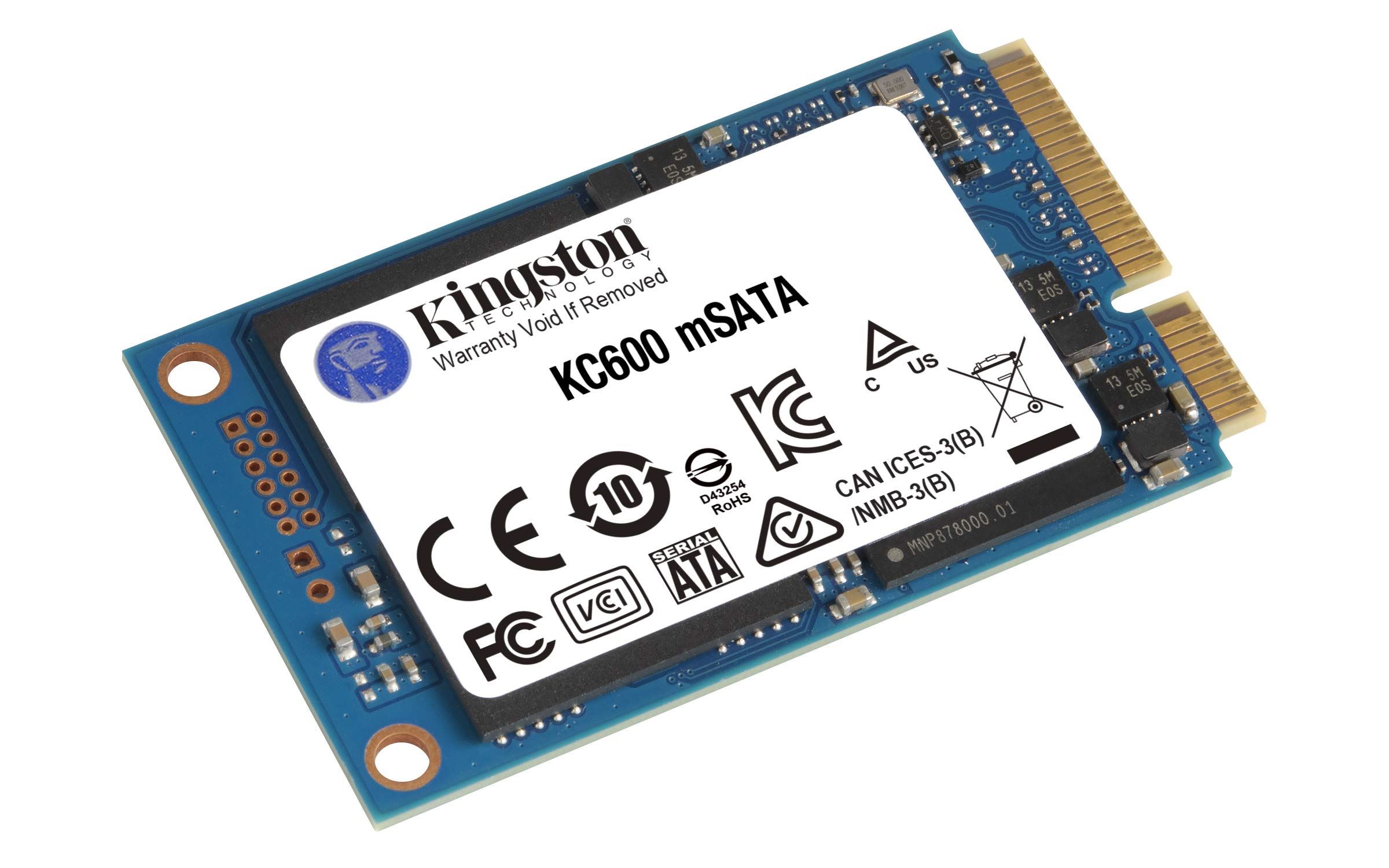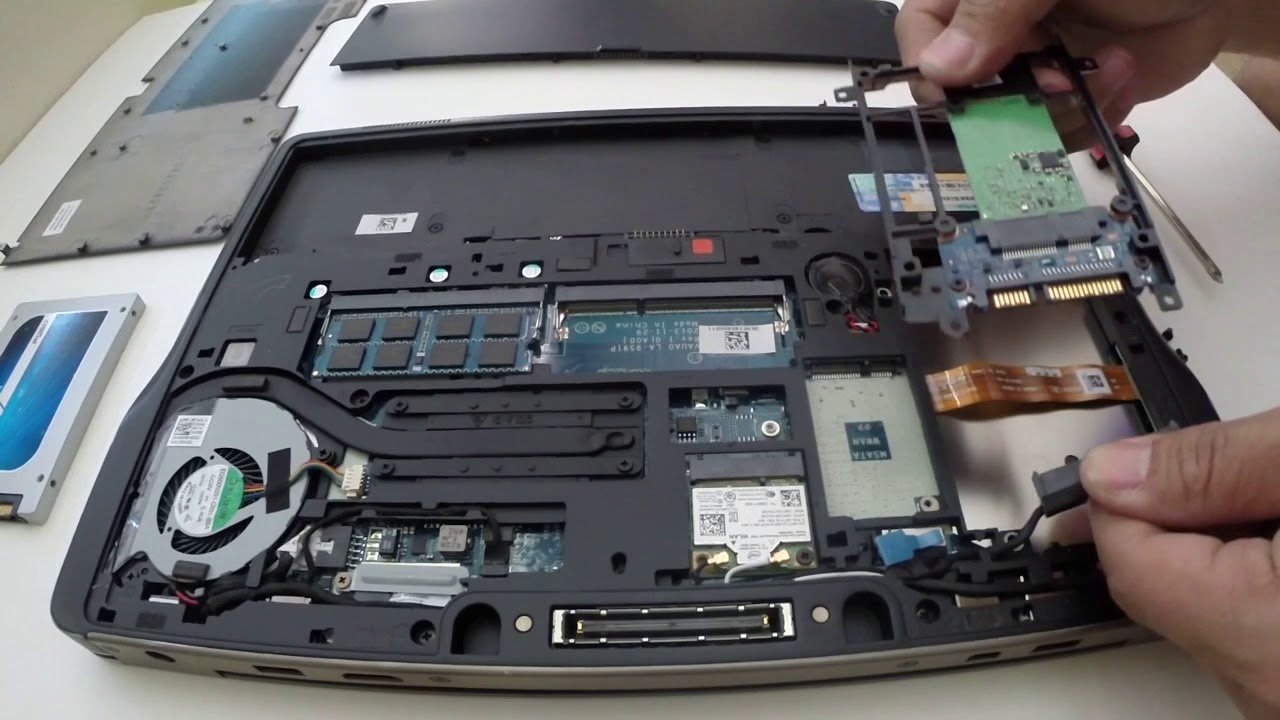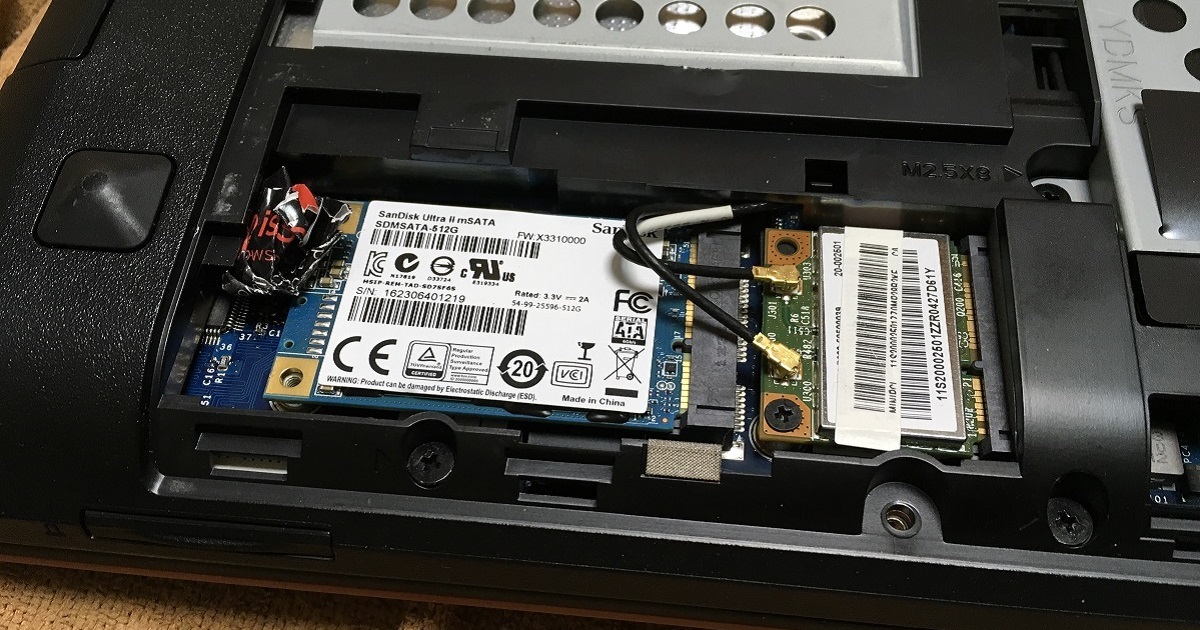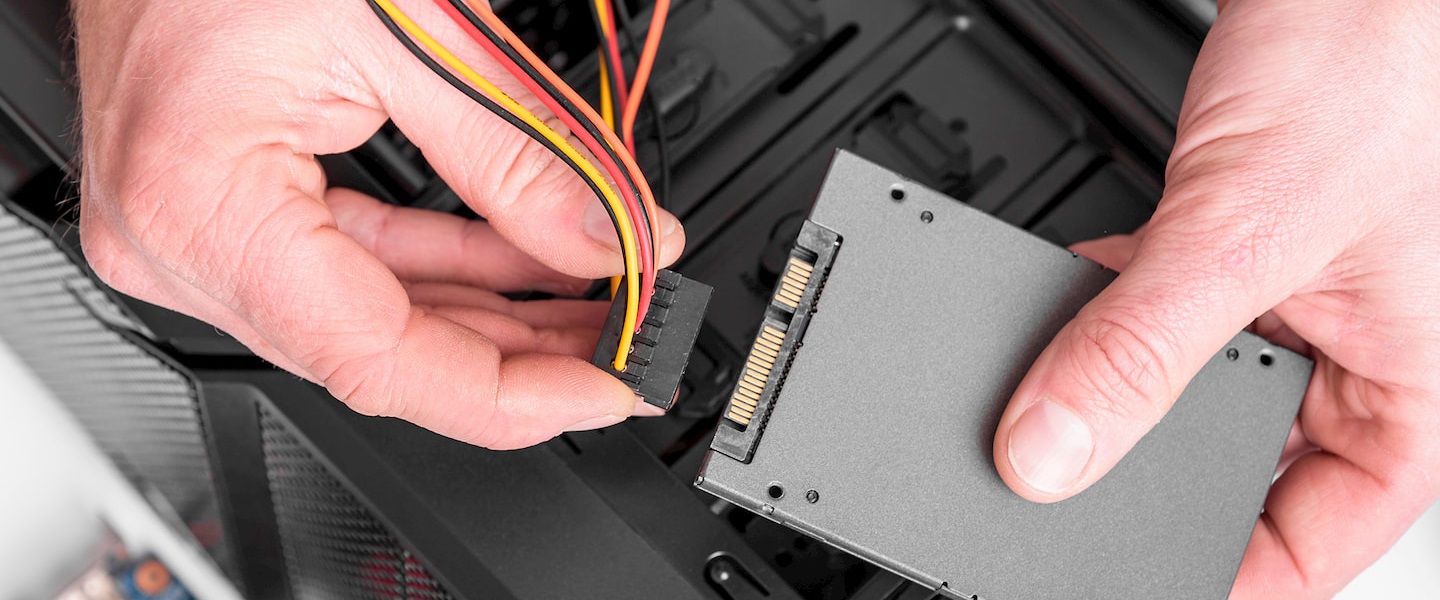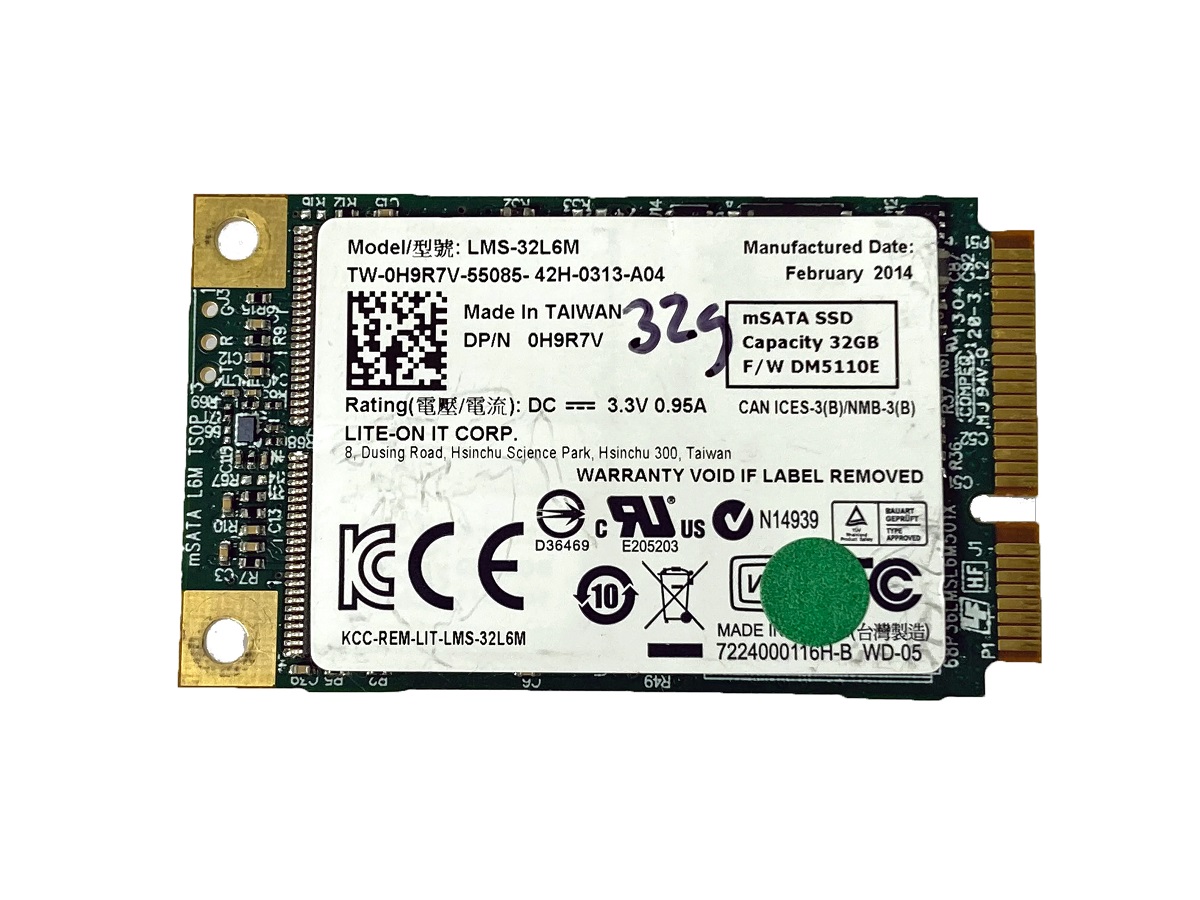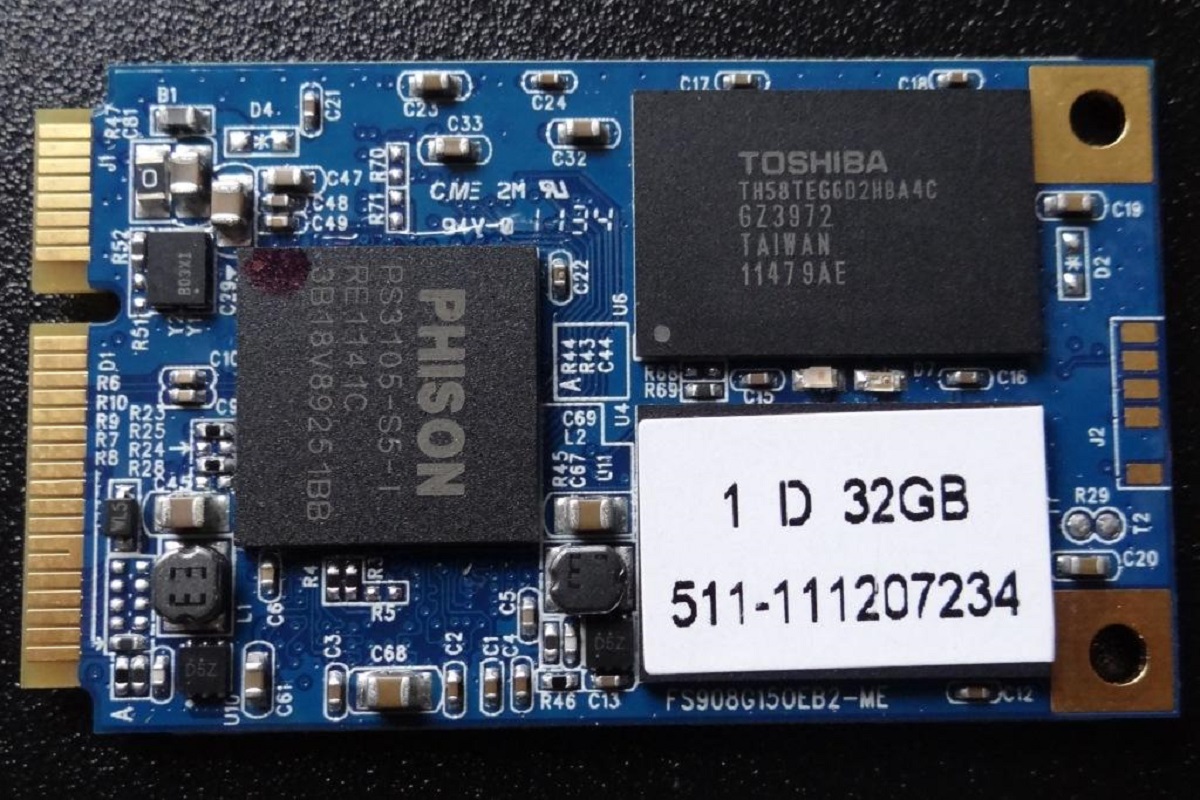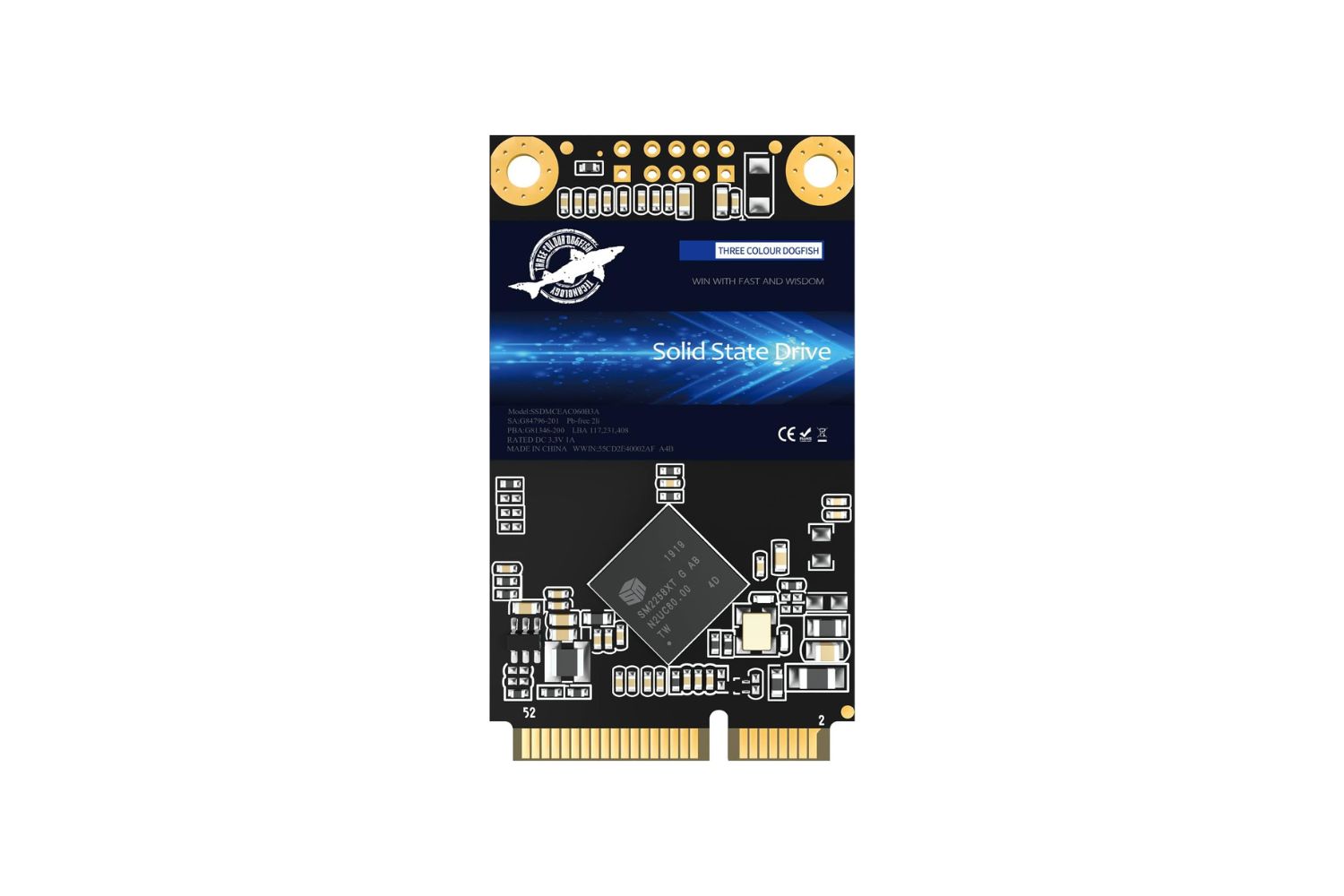Introduction
Welcome to today’s discussion on mSATA SSD drives! In this article, we will explore what an mSATA SSD drive is, its advantages, uses, and how it works. We will also delve into the differences between mSATA SSD drives and other storage solutions, as well as the factors to consider when choosing one for your device. So let’s jump right in and explore the world of mSATA SSD drives!
In the digital age, where storage demands are ever-increasing, having a reliable and efficient storage solution is crucial. This is where mSATA SSD drives come into play. mSATA, which stands for mini SATA, is a small form factor solid-state drive that provides fast and accessible storage for various devices.
Unlike traditional hard disk drives (HDDs) that use mechanical spinning disks, mSATA SSD drives utilize flash memory technology. This means that they have no moving parts, making them more durable, energy-efficient, and faster than HDDs. So, if you’re tired of waiting for your device to boot up or open large files, an mSATA SSD drive is the answer to your storage woes.
mSATA SSD drives offer several advantages over other storage solutions. Firstly, their small form factor makes them ideal for compact devices such as ultrabooks, tablets, and Mini-ITX motherboards, where space is limited. They can easily fit into slim designs without compromising on performance.
Secondly, mSATA SSD drives provide blazing-fast read and write speeds, significantly improving the overall performance of your device. This means that you can enjoy quicker boot times, faster file transfers, and reduced loading times for applications and games. Whether you’re a gamer, professional, or casual user, the speed boost offered by an mSATA SSD drive can greatly enhance your computing experience.
Furthermore, mSATA SSD drives consume less power than traditional HDDs, resulting in improved battery life for portable devices. So, whether you’re traveling, working remotely, or simply using your device on the go, you can rely on an mSATA SSD drive to provide efficient storage without draining your battery.
Now that we have covered the advantages and benefits of mSATA SSD drives, let’s delve into some common uses for these drives. Stay tuned as we explore their applications in various devices and scenarios.
What is an mSATA SSD Drive?
An mSATA SSD drive is a solid-state drive that utilizes mini-SATA technology to provide fast and reliable storage solutions for modern devices. Unlike traditional hard disk drives (HDDs) that have mechanical components and spinning disks, mSATA SSD drives are entirely electronic. This means that they do not have any moving parts, making them more durable and less prone to failure.
The term “mSATA” stands for mini-SATA, referring to the smaller form factor that these drives have compared to standard SATA drives. mSATA SSD drives are similar in physical shape to a stick of RAM and are much smaller than traditional 2.5-inch or 3.5-inch SATA drives. Their compact size makes them ideal for devices where space is limited, such as ultrabooks, tablets, and Mini-ITX motherboards.
mSATA SSD drives are known for their lightning-fast read and write speeds, thanks to the use of flash memory technology. This technology allows data to be stored and retrieved quickly, resulting in improved overall system performance. Whether you’re transferring large files, running resource-intensive applications, or booting up your device, an mSATA SSD drive can significantly reduce waiting times and provide a smooth user experience.
One of the key benefits of mSATA SSD drives is their energy efficiency. Compared to traditional HDDs, mSATA SSD drives consume less power, resulting in improved battery life for mobile devices. This makes them an excellent choice for laptops, ultrabooks, and tablets, where portability and extended battery life are essential.
Another advantage of mSATA SSD drives is their durability. Since they do not have any mechanical components, they are more resistant to shocks, vibrations, and drops. This makes them an ideal storage solution for portable devices that may be subjected to frequent movement or accidental drops.
In summary, mSATA SSD drives are small, compact, and highly efficient storage solutions. They offer fast read and write speeds, improved overall system performance, and extended battery life for mobile devices. With their durable design and compatibility with various devices, mSATA SSD drives have become a popular choice for users who prioritize performance and reliability in their storage solutions.
Advantages of mSATA SSD Drives
mSATA SSD drives offer several advantages over traditional storage solutions, making them a popular choice for users seeking high-performance and reliable storage options. Here are some key advantages of mSATA SSD drives:
1. Faster Performance: mSATA SSD drives utilize flash memory technology, providing significantly faster read and write speeds compared to traditional hard disk drives (HDDs). This means quicker boot times, faster file transfers, and improved overall system responsiveness. Whether you’re editing large multimedia files or running resource-intensive applications, an mSATA SSD drive can handle the demands and deliver a smooth and seamless experience.
2. Compact Form Factor: mSATA SSD drives are designed with a smaller form factor, allowing them to fit into compact devices where space is limited. They are commonly used in ultrabooks, mini PCs, and small form factor desktops. The compact size of mSATA SSD drives enables manufacturers to create sleek and slim devices without compromising on storage capacity or performance.
3. Lower Power Consumption: Compared to traditional HDDs, mSATA SSD drives consume significantly less power. This translates to improved battery life for laptops, tablets, and other portable devices. If you’re frequently on-the-go or working remotely, an mSATA SSD drive can help extend your device’s battery life, allowing you to stay productive for longer periods without needing to recharge.
4. Enhanced Durability: Since mSATA SSD drives have no moving parts, they are more resistant to shock, vibration, and physical impact. This makes them ideal for portable devices that may experience frequent movement or accidental drops. With an mSATA SSD drive, you can have peace of mind knowing that your data is securely stored, even in demanding environments.
5. No Noise: Unlike HDDs, which generate noise due to their spinning disks and moving parts, mSATA SSD drives operate silently. This is because they do not have any mechanical components. If you prefer a quiet working environment or enjoy watching movies or listening to music without background noise, an mSATA SSD drive is the perfect storage solution for you.
In summary, mSATA SSD drives provide faster performance, a compact form factor, low power consumption, enhanced durability, and a noise-free operation. These advantages make them a preferred choice for users who demand high-speed storage without sacrificing space, power efficiency, or durability. Whether you’re a professional, gamer, or casual user, upgrading to an mSATA SSD drive can greatly enhance your computing experience.
Uses of mSATA SSD Drives
mSATA SSD drives have a wide range of applications and can be used in various devices and scenarios. Their compact size, fast performance, and energy efficiency make them an ideal storage solution for different user needs. Here are some common uses of mSATA SSD drives:
1. Ultrabooks and Laptops: One of the primary uses of mSATA SSD drives is in ultrabooks and laptops. Due to their small form factor, mSATA SSD drives can easily fit into the slim and lightweight designs of ultrabooks, providing fast and reliable storage without adding bulk. These drives enhance the overall performance of the devices, enabling quick boot times, rapid application launches, and seamless multitasking.
2. Tablets and Convertible Devices: With the rising popularity of tablets and convertible devices, mSATA SSD drives have become a preferred choice for storage. They offer high-speed storage in a compact size, allowing manufacturers to create thinner and more versatile tablets. Whether you’re using a tablet for work, entertainment, or both, an mSATA SSD drive ensures snappy performance and quick access to your files.
3. Mini-PCs and Small Form Factor Desktops: Many mini-PCs and small form factor desktops rely on mSATA SSD drives for storage. These devices are designed to save space without compromising on performance, making mSATA SSD drives the perfect storage solution. Whether you’re building a compact home theater PC, a media server, or a small office workstation, the fast and efficient storage provided by mSATA SSD drives guarantees smooth operation.
4. Industrial Computing and Embedded Systems: mSATA SSD drives find applications in industrial computing, where ruggedness, reliability, and compact size are essential. These drives can withstand harsh environments, temperature fluctuations, and extreme vibrations, making them suitable for use in embedded systems, transportation equipment, industrial control systems, and automation devices.
5. Gaming Consoles and Gaming PCs: Gamers often demand high-performance storage solutions that can handle large game files and deliver quick load times. mSATA SSD drives provide the speed and responsiveness necessary for a smooth gaming experience. They can be used as a primary drive to install games or as a secondary drive for additional game storage, reducing loading times and improving overall gameplay performance.
In addition to these common uses, mSATA SSD drives can also be utilized in digital signage systems, automotive applications, surveillance systems, and other embedded devices that require reliable storage and fast access to data. The versatility and performance of mSATA SSD drives make them a flexible and reliable choice for a wide range of applications.
How Does an mSATA SSD Drive Work?
To understand how an mSATA SSD drive works, let’s explore the key components and technologies that enable its fast and efficient data storage capabilities.
At the heart of an mSATA SSD drive is the NAND flash memory technology. This non-volatile memory allows data to be stored even when power is not supplied to the drive. The NAND flash memory consists of multiple memory cells that store data in binary format – 0s and 1s – in a series of floating-gate transistors. Each memory cell can store multiple bits of data, with the most common types of NAND flash being single-level cell (SLC), multi-level cell (MLC), and triple-level cell (TLC).
When data needs to be read or written, the mSATA SSD drive utilizes the controller. The controller acts as the “brain” of the drive, managing data operations and facilitating communication between the flash memory cells and the host device. It handles tasks such as error correction, wear-leveling, and encryption/decryption, ensuring the integrity and security of the stored data.
To access the data, the mSATA SSD drive uses the SATA (Serial ATA) interface. The SATA interface allows for high-speed data transfer between the drive and the host device, ensuring fast read and write speeds. mSATA SSD drives typically use SATA III, which supports transfer speeds of up to 6 Gbps.
In terms of architecture, an mSATA SSD drive is organized into blocks, pages, and cells. A block is a larger unit of storage that consists of multiple pages, while each page contains multiple cells. When data needs to be stored or retrieved, the controller manages the organization of data into these blocks, pages, and cells, ensuring efficient and reliable data storage.
One critical aspect of an mSATA SSD drive is wear-leveling. Wear-leveling is a technique employed by the drive’s controller to distribute data evenly across all the memory cells, preventing excessive wear on any specific cell. This helps to maximize the lifespan of the drive and maintain consistent performance throughout its usage.
The combination of NAND flash memory, a powerful controller, and the SATA interface allows an mSATA SSD drive to deliver fast read and write speeds, improved system performance, and reliable data storage. With no moving parts, the drive operates silently and is resistant to shock, making it a durable and efficient storage solution for various devices.
In summary, an mSATA SSD drive utilizes NAND flash memory, a powerful controller, and the SATA interface to deliver high-speed and reliable storage. The controller manages data operations, while the NAND flash memory stores the data in its binary format. The mSATA SSD drive’s architecture and wear-leveling technique ensure efficient data organization and maximize the drive’s lifespan. Overall, the advanced technologies behind mSATA SSD drives enable them to provide fast, efficient, and durable storage solutions for a wide range of devices.
Differences Between mSATA SSD Drives and Other Storage Solutions
When it comes to storage solutions, there are several options available in the market. Understanding the differences between mSATA SSD drives and other storage solutions can help you make an informed decision based on your specific needs. Let’s explore the key distinctions between mSATA SSD drives and other storage solutions:
1. Physical Size: One of the primary differences between mSATA SSD drives and other storage solutions is their physical size. mSATA SSD drives are significantly smaller than traditional 2.5-inch or 3.5-inch SATA drives. This compact form factor makes them an ideal choice for devices where space is limited, such as ultrabooks, tablets, and Mini-ITX motherboards. On the other hand, traditional SATA drives are larger and usually require more space in a device.
2. Form Factor: mSATA SSD drives use the mini-SATA (mSATA) form factor, while traditional SATA drives use the standard SATA form factor. The mSATA form factor allows for greater compatibility and flexibility in slim and compact devices, whereas the standard SATA form factor is more commonly found in desktops and larger devices.
3. Performance: mSATA SSD drives offer faster performance compared to traditional hard disk drives (HDDs). With no moving parts and the utilization of flash memory technology, mSATA SSD drives provide faster data access and transfer speeds. This translates to quicker boot times, reduced application loading times, and improved overall system responsiveness. In contrast, HDDs rely on mechanical spinning disks, which limits their data access speeds and overall performance.
4. Power Consumption: Another notable difference is power consumption. mSATA SSD drives consume less power than traditional HDDs. This is because SSDs do not have moving parts that require energy to spin, resulting in improved energy efficiency. Lower power consumption is especially beneficial for portable devices, as it can help extend battery life and reduce the strain on power sources.
5. Durability: mSATA SSD drives are more durable compared to traditional HDDs. Since SSDs have no moving components, they are less susceptible to mechanical failures caused by vibrations, shocks, or accidental drops. On the other hand, HDDs are more prone to damage if subjected to physical impacts due to their mechanical nature.
6. Noise: mSATA SSD drives operate silently, as they do not have any moving parts. HDDs, on the other hand, produce noise due to the spinning disks and mechanical components. This makes mSATA SSD drives a preferred choice for users who value a quiet working environment or enjoy media consumption without background noise.
It’s important to note that while mSATA SSD drives offer numerous advantages, they may have a smaller storage capacity compared to traditional HDDs or larger SSDs. However, this gap is closing rapidly as the technology advances, and higher-capacity mSATA SSD drives become more readily available.
In summary, the differences between mSATA SSD drives and other storage solutions lie in their physical size, form factor, performance, power consumption, durability, and noise levels. mSATA SSD drives excel in compactness, faster performance, lower power consumption, improved durability, and silent operation. Understanding these distinctions can help you choose the right storage solution that aligns with your device’s requirements and usage preferences.
Factors to Consider when Choosing an mSATA SSD Drive
When choosing an mSATA SSD drive, it’s important to consider several factors to ensure that you select the right drive that meets your specific requirements. Here are some key factors to consider when choosing an mSATA SSD drive:
1. Storage Capacity: The storage capacity of the mSATA SSD drive is an essential consideration. Determine how much storage space you need for your files, documents, applications, and media. Consider both your current needs and potential future requirements. It is advisable to choose a drive with ample storage capacity to avoid running out of space in the future.
2. Speed and Performance: The speed and performance of the mSATA SSD drive significantly impact the overall system performance. Look for drives that offer fast read and write speeds to ensure quick boot times, rapid application launches, and smooth multitasking. Consider the drive’s read and write speeds, as well as its random and sequential performance, which can give you a better understanding of its performance capabilities.
3. Reliability and Durability: The reliability and durability of the mSATA SSD drive are crucial, especially if you plan to use it in a portable device or under demanding conditions. Look for drives that utilize high-quality components and have a proven track record for reliability. Consider features such as error correction, wear-leveling, and overprovisioning, which can enhance the drive’s reliability and lifespan.
4. Compatibility: Ensure that the mSATA SSD drive is compatible with your device. Check the specifications of your device to confirm if it supports mSATA SSD drives. Additionally, consider the interface compatibility, as most mSATA SSD drives use the SATA III interface. It’s important to ensure that your device supports this interface for optimal compatibility and performance.
5. Price: Consider your budget when choosing an mSATA SSD drive. Compare prices across different brands and capacities to find the best value for your money. Keep in mind that higher-capacity drives and those with advanced features often come at a higher price point.
6. Brand Reputation and Warranty: Look for reputable brands known for their quality and reliability. Research customer reviews and ratings to get an idea of the brand’s reputation. Additionally, consider the warranty offered by the manufacturer. A longer warranty period can provide peace of mind and protection against any potential defects or failures.
7. Additional Features: Some mSATA SSD drives may come with additional features, such as hardware encryption, advanced caching mechanisms, or power-saving modes. Consider if these features align with your specific needs and if they provide added value to your usage scenario.
By considering these factors, you can narrow down your options and choose an mSATA SSD drive that best suits your storage requirements, performance needs, and budget. Remember to prioritize the factors that are most important to you and strike a balance between price and performance to make an informed decision.
Installing an mSATA SSD Drive in Your Device
Installing an mSATA SSD drive in your device can significantly enhance its storage capacity, speed, and overall performance. Here are the general steps to follow when installing an mSATA SSD drive in your device:
1. Check Device Compatibility: Before purchasing an mSATA SSD drive, ensure that your device supports mSATA SSDs. Check the specifications or user manual of your device to confirm compatibility.
2. Gather Tools: To install the mSATA SSD drive, you may need some basic tools such as a screwdriver (typically a small Phillips head), an anti-static wrist strap, and any necessary cables or adapters.
3. Prepare Your Device: Before opening your device, power it off and disconnect it from the power source. If it’s a laptop, remove the battery. Ensure you are working on a stable, static-free surface to prevent any damage to the components.
4. Locate the mSATA Slot: Find the mSATA slot on your device’s motherboard or the specific area designed for mSATA SSD installation. It is a small slot that resembles a RAM slot and is typically labeled “mSATA” or “SSD.”
5. Insert the mSATA SSD: Gently insert the mSATA SSD into the mSATA slot at a slight angle, making sure the gold connectors on the drive are properly aligned with the slot. Push the drive down until it is fully seated and secure.
6. Secure the Drive: Once the mSATA SSD is inserted, locate the small screw hole near the slot. Use the screw provided or a compatible screw to secure the drive in place. Be careful not to overtighten the screw as it may damage the drive or the slot.
7. Reassemble Your Device: If you had to remove any components or covers to access the mSATA slot, carefully reattach them, ensuring they are properly aligned and secured. Double-check that everything is securely in place before proceeding.
8. Power On and Configure: Once the mSATA SSD drive is installed, reconnect your device to the power source (if applicable) and power it on. Access your device’s BIOS or UEFI settings to confirm that the mSATA SSD is recognized. If needed, adjust the boot order to prioritize the mSATA SSD as the primary boot device.
9. Format and Transfer Data: If the mSATA SSD is being installed as a secondary drive, you may need to format it and transfer data from your existing drive. Follow the manufacturer’s instructions or consult the device’s user manual for guidance on formatting and data transfer.
It’s important to note that the installation process may vary slightly depending on your specific device and its design. Always refer to the manufacturer’s instructions or consult a professional if you are unsure or uncomfortable performing the installation yourself.
By following these steps and taking proper precautions, you can successfully install an mSATA SSD drive in your device, unlocking its full potential and benefiting from improved storage and performance.
Conclusion
In conclusion, mSATA SSD drives provide a compact, high-performance storage solution for various devices. Their small form factor, fast read and write speeds, and lower power consumption make them ideal for ultrabooks, laptops, tablets, mini-PCs, and other devices where space is limited.
The advantages of mSATA SSD drives over traditional storage solutions, such as HDDs, are significant. They offer faster performance, improved system responsiveness, and enhanced durability due to their lack of moving parts. The noise-free operation and energy efficiency of mSATA SSD drives further add to their appeal.
When choosing an mSATA SSD drive, it’s important to consider factors such as storage capacity, speed, reliability, compatibility, price, and additional features. These factors will help you find the right mSATA SSD drive that meets your specific requirements and fits within your budget.
The installation of an mSATA SSD drive in your device can be a game-changer, providing you with increased storage capacity and faster access to your data. Following the necessary steps, such as checking device compatibility, inserting the drive correctly, and securing it in place, ensures a successful installation.
As technology continues to advance, mSATA SSD drives are becoming more affordable and offering higher storage capacities. With their numerous benefits, including speed, energy efficiency, durability, and compatibility, mSATA SSD drives are transforming the way we store and access data.
So, whether you’re a professional, gamer, or casual user looking to upgrade your device’s storage, consider investing in an mSATA SSD drive. Embrace the speed and reliability that this advanced storage solution provides and elevate your computing experience to new heights.







